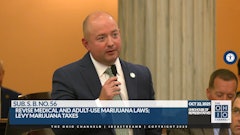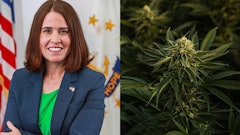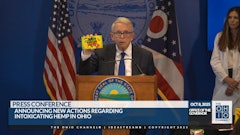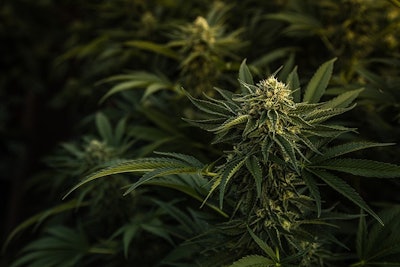
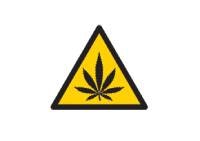
The patchwork of state regulations that govern cannabis businesses often means that each state tackles the industry’s problems with different solutions, but a cannabis-focused committee within ASTM International aims to standardize as many aspects of the industry as it can.
Committee D37, the cannabis committee within ASTM International, a century-old organization that has released tens of thousands of global standards for a wide range of industries, announced last month that it has released a new standard that provides an international symbol for intoxicating cannabinoids.
The standard, D8441/D8441M, called the International Intoxicating Cannabinoid Product Symbol (IICPS), will apply to all finished cannabis products intended for consumer use.
ASTM International member David Nathan co-designed the symbol in collaboration with his son, Eli Nathan, and Doctors for Cannabis Regulation (DFCR), an organization made up of physicians and other health professionals working to advance cannabis legalization and regulation.
David Vaillencourt, vice chair of the D37 committee, which has over 1,100 members across 36 countries, says Montana, New Jersey, Vermont and Alaska are all considering adopting the symbol.
“It is the international symbol for identifying consumer products containing intoxicating cannabinoids,” Vaillencourt says, “but it’s not meant to be about THC because we know whether it’s delta-8 or HHC, [it can be] any cannabinoid that has intoxicating properties.”
Since nearly every state with a regulated cannabis market currently has its own unique symbol to indicate that a product contains cannabinoids, the symbol is meant to warn consumers, in a standardized way, that the product could cause inebriation or intoxication.
The international symbol is just one of the many standards that ASTM’s D37 committee on cannabis has released in recent years. The committee has published an auditing standard for cannabis businesses, for example, and has also set to work on developing a cannabis and hemp sampling standard, as well as sustainability standards for the industry.
The committee is currently working with U.S. Pharmacopeia, which sets standards for the pharmaceutical manufacturing industry, to publish a standard on quality attributes for medical cannabis flower.
“That’s one that will make a big splash this year because that’s actually a specification,” Vaillencourt says. “Think about every state and marketplace—what’s the acceptable range of THC? Is THC supposed to be 14 percent to 18 percent? What’s the acceptable variation?”
That standard would also describe specifications for impurities in medical cannabis, such as pesticides and heavy metals.
The D37 committee, which is made up of multistate operators, trade organizations, regulators and others, must have a unanimous vote to adopt a standard; if one person votes no, the committee must come to a resolution and hold another vote until all members vote to adopt and publish the standard in question.
“We’ve watched every state roll out, and the state regulators, they’re not experts,” Vaillencourt says. “They’re trying to figure this out. We continue to get very inconsistent regulations and that’s a disaster for any business, especially if you ever want to cross state lines like a multistate operator. They’re essentially the equivalent of having to operate in many different countries—the regulations, the policies, everything is so completely different, so there’s no way to even evaluate. … The only way to harmonize is through standardization.”
Anyone can volunteer to serve on ASTM International’s D37 committee on cannabis, and Vaillencourt encourages the industry to show up and make their voices heard—and the sooner, the better, he adds.
“From a federal standpoint, we’re just going to be at the mercy of whatever the feds come up with in the next five years unless we develop our own standards as an industry and say, ‘We figured it out,’” Vaillencourt says. “ASTM is recognized through the executive branch … as a recognized form of standardization. The federal government is actually required to utilize standards from groups like ASTM when they exist. They’re required to consider them for use instead of trying to create their own frameworks.”
The D37 committee’s next in-person meeting will be held in Seattle from June 12-14, and Vaillencourt says all are welcome to attend.
“I think every trade group now at this point that I know of is working with ASTM and recognizing that this is the place [to be] while we figure out Congress and the MORE Act and SAFE Banking and all that,” he says. “This is the place where we can create the groundwork and foundation for what federal policy could look like from a unified place."














